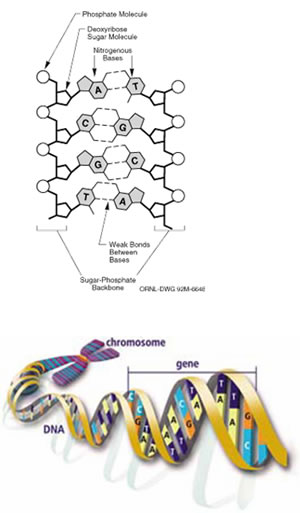Each DNA strand is composed of a string of nucleotides, which are formed from a pentose sugar, a phosphate group, and either adenine, guanine, thymine or cytosine (abbreviated as A, G, T, or C).
The shapes of the A and the T molecules (and similarly of the C and the G) are "complementary" to one another, a property which allows them to bind to each other. When DNA is copied ("replicated"), the sequence of the new strand is complementary to that of the old one. Complementarity also lies behind the ability of the two strands to form the double helix structure of DNA.
The order of the four bases in the DNA sequence of each individual organism is unique. It carries all the genetic information needed for the organism to function.




